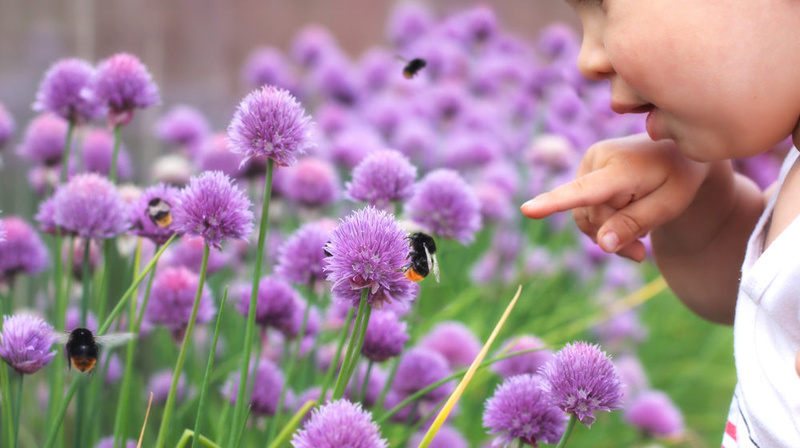
Create a Wildlife-Friendly Landscape
Create a wildlife-friendly landscape that attracts native insects, birds, organisms, and other creatures. Plant a pollinator garden; provide shelter throughout your property for insects and small critters; install water sources like bird baths or fountains; and select native plants to support beneficial wildlife.
A healthy landscape invites beneficial insects and animals. Traditional lawns are not typically conducive to hosting native wildlife, but your property can be! A wildlife-friendly landscape naturally provides food, water, and shelter for critters, which allows for the presence of natural pest control.
Plant a Pollinator Garden
A pollinator garden attracts those critical creatures that keep the majority of plants around the world flowering, fruiting, and thriving. Pollinators like butterflies, bees, birds, and bats need pollen and nectar to survive and carry on with their planet-supporting roles. Having a lively, beautiful garden on your property isn’t too bad, either.
Pollinator gardens not only provide sustenance for these essential creatures but food and shelter, too. Following are the basic guidelines to follow when planting your pollinator garden:
- Select plants that produce pollen and nectar.
- Choose only native, non-invasive plants.
- Install the garden in an area with plenty of sun and protection from the wind.
- Make sure your garden has flowers that bloom throughout the growing season. This could mean selecting a variety of plants that will bloom at different times throughout the season.
- Install a water source, such as a birdbath or fountain, create a puddle, or utilize naturally occurring streams and ponds.
Provide Shelter
Insects and critters need shelter to hide from predators, lay eggs or keep their young safe, and to stay out of harm’s way during intense weather. Incorporate a variety of natural features that will provide shelter to small insects and small animals alike. Plan your landscape with trees, hedges, logs, rocks, small wood piles, and tall grasses.
Install a Water Source
As previously stated, a water source is critical in providing an attractive space for beneficial critters. We suggest installing a fountain or birdbath if you have no natural water source. If you are lucky enough to have a pond, creek, or stream on your property, leave portions of these waterside areas natural, with rocks and grasses nearby, to create a safe habitat for wildlife.
Keep it Native and Natural
It’s always important to keep things as natural as possible when adding plant life to your Florida property. Take a step towards a more wildlife-friendly landscape by selecting native plants for your next garden.
Native plants already have what they need in your area, as they are adapted to the soil conditions and climate of the region. They don’t require soil amendments, fertilization, or supplemental irrigation like non-native plants do. Native insects, animals, and other creatures and organisms are accustomed to the area’s naturally occurring flora and depend on it for shelter and food.
Why do we recommend staying away from non-native plants?
- Non-native plants are less likely to provide sufficient food and shelter to native wildlife.
- Non-native species can compete with native plants, eventually outnumbering them and pushing them out.
- When non-native species predominate, more fertilizer is required and beneficial creatures – including pollinators – may experience health risks, reduced sustenance, and more.
- As native plants become more sparse, native wildlife suffers.